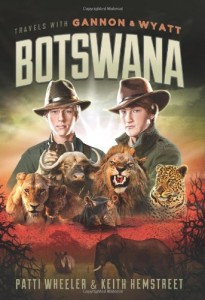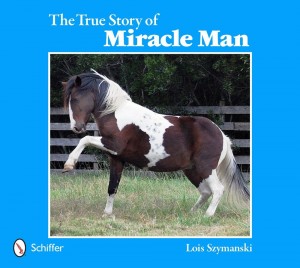When my friend Elizabeth Dulemba (aka e) asked if I wanted to read her novel, I jumped at the chance. I knew it would be worthwhile because of her dedication to quality children’s literature. I did not know how much I would enjoy reading it.

Elizabeth Dulemba
These are the questions I had for her:
You mentioned this project occurred over ten years. Can you share why you never let it go?
I never let it go, partly because I never chose to write the story in the first place.
I was sitting in a meeting between miners and the Company about a potential scenic railway routed to go north from town around a rare switchback. They Company said it would fund the train by reopening the chemical plant and sending out one shipment of sulfuric acid per week. The miners stood up in denim and plaid flannel like old, gnarled oak trees. They told heart-wrenching stories about all their family and friends they’d lost to cancers they attributed to the mines. They made thinly veiled threats that the tracks would be sabotaged if the plans moved forward. I sat in shock, a recent transplant to the area, wondering what I’d stumbled into.
That was when the Muse took hold of me. I suppose it could have been any writer, but it happened to be me. I was needed to tell the story. It wasn’t about me, but it became my responsibility. After I interviewed dozens of townspeople about the history of growing up in the area, it became about them. I was the keeper of precious documentation. When I thought the book might never get published, my sense of failure was immense. I felt responsible to the citizens of the Copper Basin to get the story right and get it shared. Giving up was never a real option.
The emotions of Jack certainly ring true. How were you able to put yourself in his place?
I’m so glad you think so! I suppose I was a little like Jack. I was a nature lover, a reader, a curious kid reaching for things beyond my borders. I share his love of trees—the wonder and holy sensation he got from them, as if they were speaking to him. And I think everybody shares his feelings of connection and yet of not fitting in. They are universal emotions.
As I mention in my review, you are careful to show both sides of most issues. For example, Jack’s dad was proud to be a miner even though the mine was killing the land. Was this on purpose and how hard was it to find the good in some of the situations?
It was quite intentional. When I started researching the book, I thought everybody shared the negative reactions to the environmental destruction. But then I met people who preferred the Red Hills. They liked not having bugs and snakes and the less desirable aspects of nature. They resented the allergies they suffered when nature returned. I quickly realized that even the most seemingly obvious issues were riddles with ambiguous grey areas, which is where I love to swim as a creator anyhow. I also didn’t want to impress my views upon the reader. I wanted to present the issues and let the reader decide for him or herself. I’m sure my biases snuck through, but I tried to be nonjudgmental.
What one thing do you want kids to take away from this book?
That’s easy – hope. It’s so easy to see the environmental damage in Coppertown (framed on the very real Copperhill, Tennessee) as irreparable, too big for any one person to do anything about – certainly a young boy. And yet I’ve seen the reclamation first-hand. These days, it takes driving down abandoned dirt roads to find evidence of the once denuded landscape. Every person who planted a seed, a tree, or worked with the wetland efforts played a part in returning the land to its natural state. It’s taken years, decades, but it has happened. And in our world of climate change and global warming, I think the idea that one person can make a difference is an important lesson.
What are you reading?
Oh gosh. I have several books going on at any given time – hardcover, kindle, audio, etc. I help choose titles being considered for the Georgia Center for the Book’s “10 Books All Young Georgians Should Read” list, so I try to read books by regional (Georgia) writers. I read fantasy as my brain candy, hot new titles, and books by my talented friends. I also interview picture book creators on my blog each week, so I’m constantly reading picture books that publishers send. It would be lovely to have more time to read it all!

Lightning round. For you, is it:
Macaroni and cheese or burgers?
I used to claim mac-n-cheese as the base to my food pyramid before I went gluten free. So Jack eats a lot of it because I can’t anymore. (Biscuits too.)
Fairy crosses or frogs?
Fairy crosses!
Barefoot or shoes?
Fuzzy slippers or barefoot.
Quilting or sketching?
Sketching for sure. I did make a quilt once. It was embarrassingly bad.
WINNER OF:
Southern Independent Book Sellers (SIBA) Okra Pick
Gold Mom’s Choice Award Winner
The 2014 National Book Festival (Washington DC) Featured Title for the state of Georgia
And now for my review:
Written by Elizabeth Dulemba
Buy on Amazon
With heartfelt passion, Dulemba takes the reader into a world few people knew. Set in 1986 in the Copper Basin, at the intersection of Tennessee, Georgia, and North Carolina, the story follows a bright thirteen-year-old boy as his family and his town struggle to survive. Jack’s father is understandably proud to be a copper miner. He’s good at it and it provides a good living for his family. Plus, it’s a family tradition. But Jack sees the other side. Dad is always in danger, he’s always at risk for disease, and the chemicals from the mine have killed all the trees, animals, and birds. Dulemba’s approach isn’t completely balanced, but she does a great job of bringing in alternative issues. With each event, she is able to show the good and the bad. A cave in kills some miners, but not Jack’s dad. The union strikes. The family has tough times, but Jack’s dad is no longer underground. Christmas is sparse, but the family becomes closer. The area floods, but that allows frogs to hatch at a pond. The mine may close permanently, but a sparrow is spotted on Water Street. Is Mother Nature making a come back?
By taking the reader directly into the lives of the beautifully crafted characters, the author shows how the environment impacts everyone involved. Fifth graders, especially, will learn about life after copper mining and the resilience of nature, if given half a chance. Literacy skills and comprehension are furthered when the reader cares about Jack and his community. Many reading activities are suggested, including clean-up of a local area, establishment of a community garden or terrarium, and learning about trees, insects, and frogs. The publisher’s website, http://www.littlepicklepress.com/, provides support for the environmental message from the book’s pages. The author’s website, http://dulemba.blogspot.com, is also fantastic.
 Title: A Bird on Water Street
Title: A Bird on Water Street- Author: Elizabeth O. Dulemba
- Publisher: Little Pickle Press, 2014
- Reviewer: Sue Poduska
- Format: Paperback, 270 pages
- Genre: Historical fiction, nature, environment, mining
- ISBN: 978-0545035330
Elizabeth will provide an autographed and dedicated copy of A Bird on Water Street to one lucky reader. Leave a comment, complete with your name and email address. I will pick a winner at random on Tuesday, May 27, 2014.











